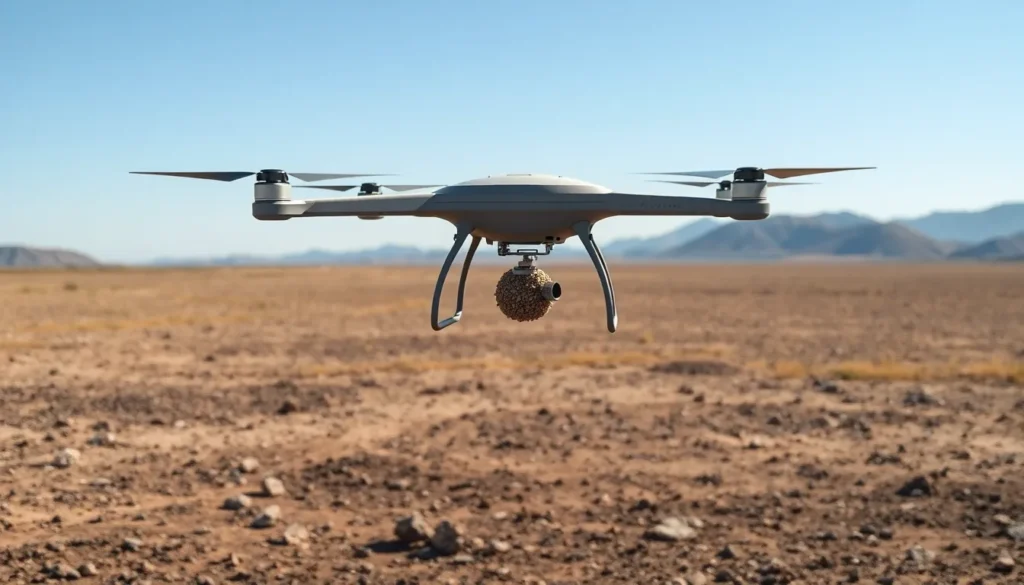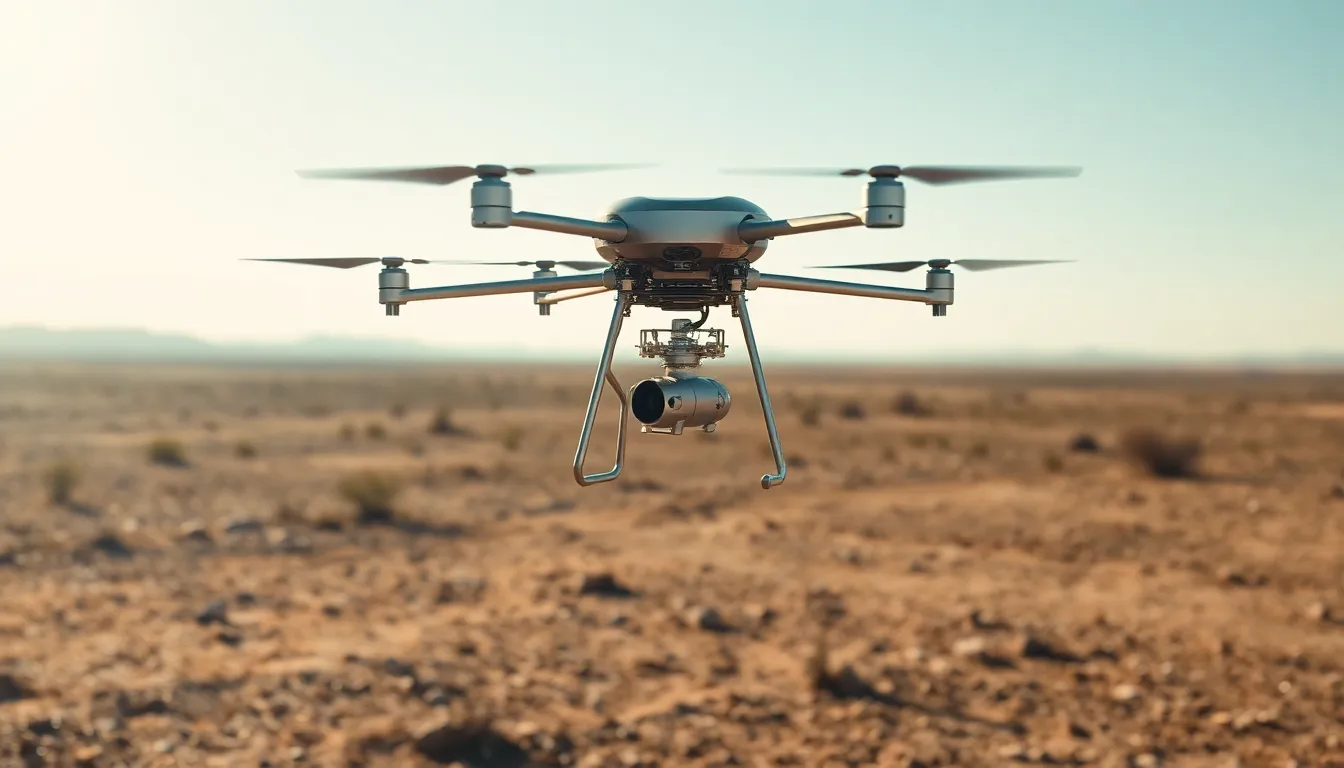Table of Contents
ToggleIn a world where technology constantly evolves, the concept of “bombanaries” emerges as a fascinating intersection of innovation and environmental awareness. These unique devices blend the principles of drone technology with ecological restoration, offering a creative solution to combat deforestation and promote biodiversity. By deploying seed bombs from the sky, bombanaries aim to rejuvenate barren landscapes and foster new life.
As climate change poses a significant threat to ecosystems worldwide, the urgency for effective restoration methods has never been greater. Bombanaries represent a promising approach that harnesses both aerial precision and nature’s resilience. This article delves into the mechanics, benefits, and potential of bombanaries, shedding light on how they could revolutionize reforestation efforts and inspire a greener future.
Overview of Bombanaries
Bombanaries represent a revolutionary approach in the intersection of drone technology and ecological restoration. These devices utilize aerial seed bombs with the goal of addressing deforestation and enhancing biodiversity across various ecosystems.
Bombanaries deploy compressed seed pods from a drone, ensuring efficient coverage over large, inaccessible areas. Each seed pod contains various native plant seeds encased in a biodegradable material, promoting natural growth and reducing the need for fertilizers.
The benefits of bombanaries extend beyond mere reforestation. They contribute to soil stabilization, water retention, and the regeneration of local flora, improving habitat for diverse wildlife. By targeting barren landscapes, bombanaries facilitate the restoration of ecological balance with minimal human intervention.
Mechanical advancements in bombanaries enable precise altitude and dispersal control, optimizing the planting process. This precision enhances germination rates and supports successful vegetation establishment. Furthermore, the technology adapts to different climatic conditions, broadening its applicability in diverse environmental scenarios.
Bombanaries play a vital role in climate change mitigation, aligning with global sustainability goals. As these devices integrate more with modern conservation strategies, they promise to transform traditional reforestation efforts, paving the way for more resilient ecosystems.
Features of Bombanaries
Bombanaries showcase advanced features that enhance their functionality in ecological restoration. Key aspects include innovative design and precise performance metrics, which ensure effective deployment in challenging environments.
Design and Construction
Bombanaries integrate advanced drone technology with robust design elements. They feature lightweight frames for agility, enabling easy navigation across difficult terrains. Each unit contains a specialized seed pod dispersal mechanism, allowing uniform distribution of seed bombs. The biodegradable material encasing the seeds protects them during deployment and facilitates natural decomposition upon contact with soil. Moreover, enhanced battery life and GPS capabilities ensure accurate targeting of barren areas, maximizing the efficacy of planting efforts.
Performance Metrics
Performance metrics quantify the effectiveness of bombanaries in ecological restoration. Key metrics include:
| Metric | Value |
|---|---|
| Deployment Range | Up to 5 kilometers |
| Seed Coverage Area | 10 acres per flight |
| Germination Rates | 75%–90% depending on soil conditions |
| Battery Life | 30 minutes of continuous flight |
| Seed Bomb Weight | Approximately 5 grams each |
High germination rates indicate successful seeding, while the extensive coverage area demonstrates efficiency in restoration efforts. Continuous improvements in these metrics enhance the overall impact of bombanaries on reforestation and biodiversity enhancement.
Applications of Bombanaries
Bombanaries serve diverse applications, primarily benefitting military and civilian sectors. Their advanced technology enables effective, efficient responses to various environmental and logistical challenges.
Military Uses
Bombanaries enhance military operations through improved reconnaissance and strategic environmental management. They enable troops to deploy seed bombs in deforested areas, restoring ecosystems while camouflaging military activities. Bombanaries assist in reducing the ecological footprint of military operations by promoting biodiversity in affected regions. Their GPS capabilities allow precise targeting for both seed deployment and reconnaissance, offering real-time surveillance and environmental monitoring.
Civilian Uses
Bombanaries play a vital role in civilian ecological restoration projects. They assist governments and NGOs in reforestation efforts by covering large, hard-to-reach areas quickly. Their application in urban landscapes helps regenerate green spaces, enhancing air quality and promoting community engagement with nature. Educational programs utilize bombanaries to teach sustainable practices, highlighting the importance of biodiversity. Additionally, these devices support agricultural initiatives by improving soil health and increasing crop resilience through strategic planting of native species.
Safety Considerations
Safety is paramount when operating bombanaries in diverse environments. Understanding potential risks helps ensure effective and secure deployment.
- Pilot Training: Operators must undergo comprehensive training to execute precise flights. Familiarity with the drone’s controls, navigation systems, and operational protocols is crucial for safety and efficiency.
- Environmental Impact Assessments: Conduct detailed assessments of target areas. Evaluating local ecosystems allows for identifying potential risks, ensuring compliance with environmental regulations.
- Payload Monitoring: Regularly check seed pod integrity and weight. Each pod must remain intact to avoid malfunctions during deployment, ensuring only biodegradable materials disperse.
- Weather Considerations: Monitor weather conditions before flights. Wind speeds exceeding 10 mph can affect flight stability and seed distribution accuracy, posing risks to both the drone and surrounding areas.
- Geographical Challenges: Assess terrain conditions thoroughly. Obstacles such as trees, buildings, or unstable land can hinder successful deployment or cause drone loss.
- Public Awareness: Notify local communities prior to operations. Clear communication fosters understanding of bombanaries and prevents misunderstandings about drone activities.
- Maintenance Checks: Schedule routine inspections of bombanaries. Ensuring all components function optimally minimizes the risk of technical failures during flights.
- Emergency Protocols: Develop and implement emergency procedures. Operators must know how to handle unforeseen issues such as equipment failures or adverse weather conditions effectively.
By prioritizing these safety considerations, operators enhance the success of bombanaries in promoting ecological restoration and minimizing risks associated with their deployment.
Environmental Impact
Bombanaries significantly enhance ecological restoration efforts, promoting environmental health. Their aerial seed bomb technology distributes native plant seeds over vast, hard-to-reach areas, revitalizing ecosystems and improving biodiversity. Research indicates that native plants support local wildlife populations. This method not only increases plant diversity but also fosters habitats that sustain various species.
Bombanaries contribute to soil stabilization. As plants establish roots, they mitigate erosion and improve soil structure. A study shows that vegetation reduces surface runoff, enhancing water retention. Improved water retention benefits both plants and local fauna, creating a more balanced ecosystem.
Besides promoting plant growth, bombanaries play a critical role in carbon sequestration. By increasing forested areas, they capture atmospheric CO2, thereby actively combating climate change. The potential for bombanaries to reduce urban heat islands exists as well, as increased greenery can lower surrounding temperatures and improve air quality.
Deploying bombanaries also minimizes chemical use in reforestation projects. The biodegradable seed pods eliminate the need for fertilizers, thereby reducing harm to local soil and water systems. This sustainable approach fosters self-sufficient ecosystems that thrive without external inputs.
Targets for bombanaries include arid and degraded lands, where traditional planting methods often fail. Studies highlight their effectiveness in desert reclamation, showing increases in vegetation cover and biodiversity. This innovative technology aligns with global sustainability targets, creating resilient ecosystems capable of withstanding environmental changes.
Overall, the environmental impact of bombanaries showcases a multifaceted approach to restoring ecosystems. They facilitate efficient reforestation, enhance biodiversity, improve soil health, and contribute to climate change mitigation, demonstrating significant potential for future ecological initiatives.
Conclusion
Bombanaries are revolutionizing the way ecological restoration is approached. Their innovative design and advanced technology enable efficient reforestation efforts while promoting biodiversity. By utilizing aerial seed bombs, these devices not only restore barren landscapes but also enhance soil health and support local wildlife.
As climate change continues to pose significant challenges, bombanaries offer a promising solution for revitalizing ecosystems. Their versatility in both military and civilian applications further underscores their importance in environmental management. With ongoing improvements in performance and safety measures, bombanaries are set to play a vital role in sustainable practices and the future of ecological restoration.




